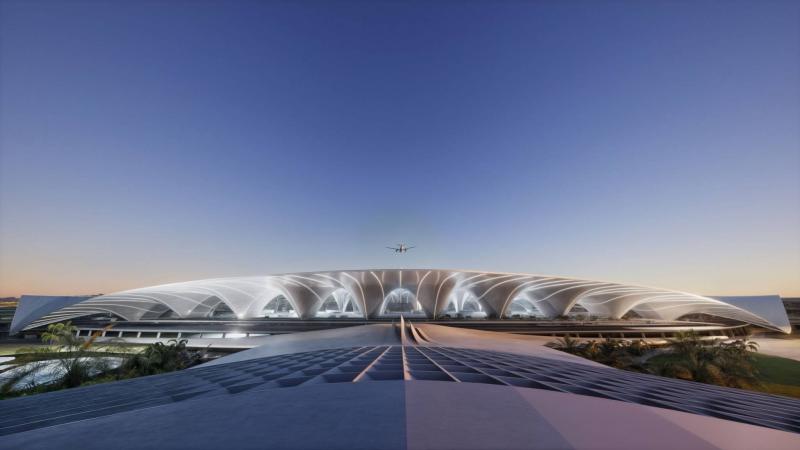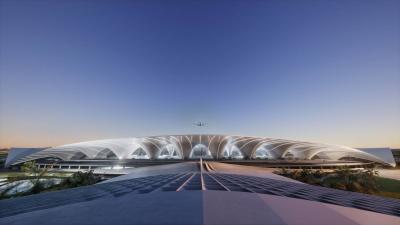Majid Al Joker, CEO of operations at "Dubai Airports," revealed that the number of aircraft gates at Al Maktoum Airport will reach 210 upon the completion of the first phase of expansion in 10 years, before ultimately reaching 400 gates in a final phase with no specified timeline. He noted that the current number of gates at Dubai Airport is 84.
In statements to the Emirates News Agency (WAM), Al Joker emphasized that the new Al Maktoum Airport promises travelers an exceptional travel experience that facilitates their journey even before they arrive at the airport. He indicated that the new airport will feature a central transportation hub linking it to the city of Dubai.
He explained that the central transportation hub will be comprehensive, including taxis, buses, the metro, and other modes of transport. In addition to the airport's internal train station, there will be a central transport station, highlighting the airport's focus on encouraging the public to use public transport to reduce the carbon footprint.
The CEO of operations at "Dubai Airports" stated that the announced expansion of Dubai Airport reflects an initial vision for the new airport and its planned capacity, noting the need to work on detailed aspects, especially regarding operational philosophy and guest experience from the moment they enter the airport.
He confirmed that the guest travel experience will be organized through integrated planning in collaboration and coordination with airlines and other strategic partners. He added, "We aspire to create a modern airport with the latest designs that offers an exceptional, fast, and comfortable experience for all travelers."
Al Joker mentioned that the design of the passenger experience at the new airport will follow an integrated approach to transportation, based on facilitating effective transitions between land and air transport with high efficiency and smoothness, while minimizing procedural checkpoints.
Regarding the current Dubai International Airport, he stated that it will continue to serve as a major aviation hub in Dubai and will be able to handle any significant increases in passenger numbers in the coming years. He noted that the aim of transitioning to the new airport does not imply a halt in necessary expansions for the current airport; expansion projects will continue based on needs, as will the integration and application of the latest technologies to ease passengers' journeys.
He stated, "Dubai Airport will expand and develop until all operations are transferred to Al Maktoum Airport." He noted that the current airport can handle up to 100 million passengers annually, with the potential to increase capacity to 120 million passengers. Any increase beyond 120 million passengers before the completion of Al Maktoum Airport's expansion can be accommodated since the completed phases can handle 27 million passengers.
On readiness for weather conditions, Al Joker confirmed that Dubai Airports has a proactive plan to address any challenges, as was done previously by forming a crisis management team in partnership with strategic partners. He stated, "Ongoing coordination occurs with Dubai Municipality and the unified center of the Roads and Transport Authority, among others, to align efforts in this regard."
He emphasized that any challenge serves as a lesson, and thus logistical capabilities are being enhanced to handle any unexpected impacts from weather conditions. He said, "We communicate with all strategic partners inside and outside the airport in this regard... and we are capable of activating all existing resources at the airport promptly."
It is worth noting that the new airport will be the largest in the world, with an investment of 128 billion dirhams and a final capacity reaching 260 million passengers. Upon the completion of its first phase in the next ten years, it will have a capacity of 150 million passengers annually. The airport covers an area of 70 square kilometers and includes five parallel runways with the highest operational specifications, four of which operate completely independently. The airport will have two passenger buildings on the western and eastern sides, five passenger terminals with over 400 aircraft gates, an internal train for easy passenger transport operating around the clock, and a central transport hub that encompasses all types of transport to and from the city.




